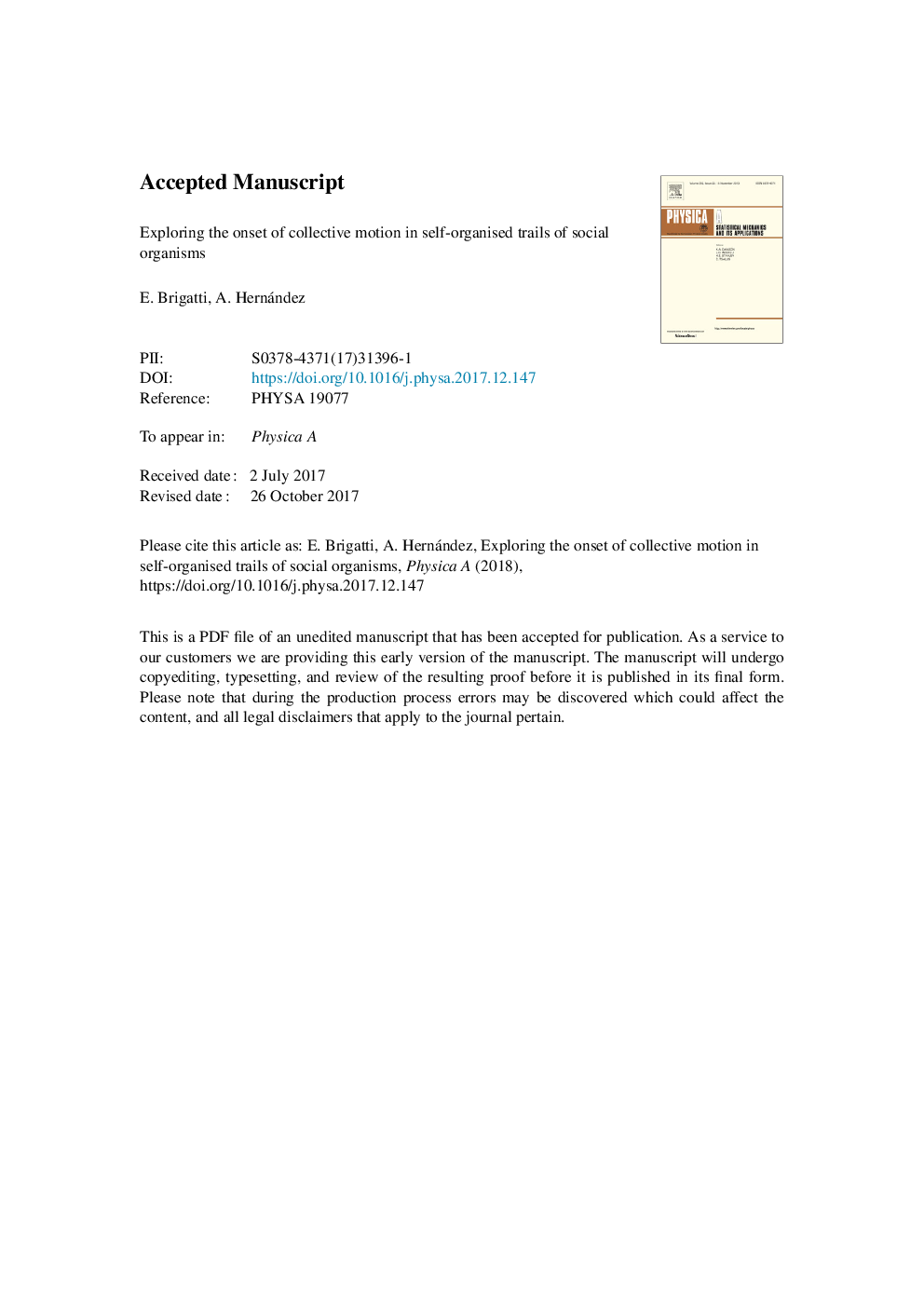| Article ID | Journal | Published Year | Pages | File Type |
|---|---|---|---|---|
| 7375970 | Physica A: Statistical Mechanics and its Applications | 2018 | 13 Pages |
Abstract
We investigate the emergence of self-organised trails between two specific target areas in collective motion of social organisms by means of an agent-based model. We present numerical evidences that an increase in the efficiency of navigation, in dependence of the colony size, exists. Moreover, the shift, from the diffusive to the directed motion can be quantitatively characterised, identifying and measuring a well defined crossover point. This point corresponds to the minimal number of individuals necessary for the onset of collective cooperation. Finally, by means of a finite-size scaling analysis, we describe its scaling behaviour as a function of the environment size. This last result can be of particular interest for interpreting empirical observations or for the design of artificial swarms.
Related Topics
Physical Sciences and Engineering
Mathematics
Mathematical Physics
Authors
E. Brigatti, A. Hernández,
